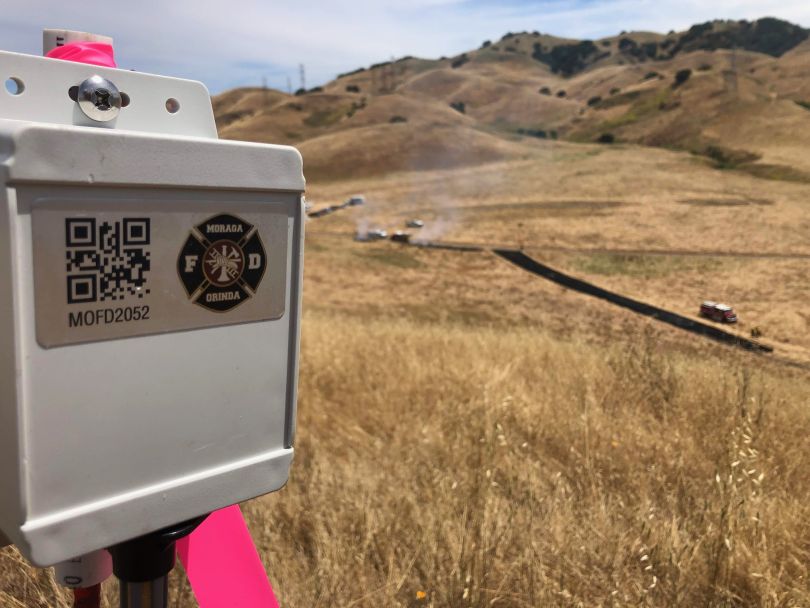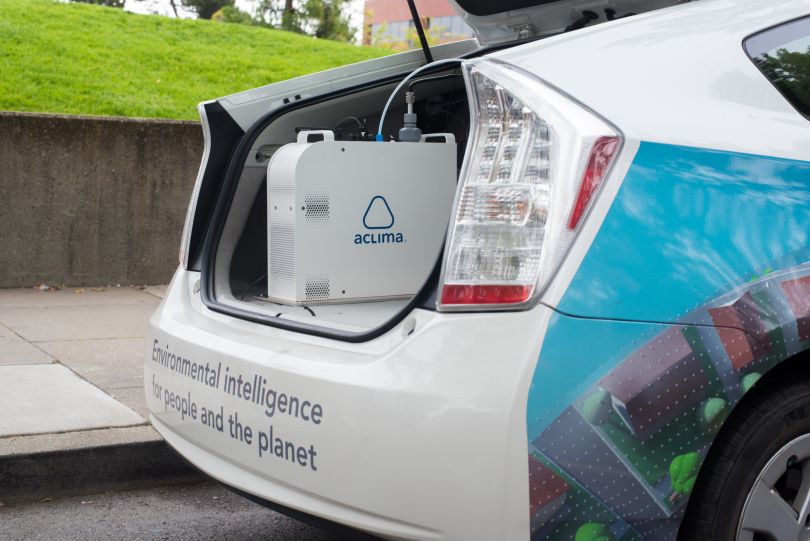As enormous wildfire blazes erupted in Northern California in October 2017, many nearby residents stayed in their homes. The fire crept closer and closer but they had no way of knowing if, when or how to evacuate. A lack of communication from Sonoma County officials was largely to blame. Only about 100,000 people were evacuated in total and 44 people died.
The problem is an enormous one to tackle, and the tech industry is taking notice. While some of the big players have skin in the game — for example, high school students in California are using Google’s Tensorflow AI software to predict high-risk fire areas — two San Francisco startups, Aclima and Zonehaven, are working diligently on wildfire preparedness technology. Even if we can’t stop California wildfires in their tracks, these companies aim to make fire season safer for the people that live here.

Zonehaven wants to make sure tragedies like the 2017 North Bay fires, and the devastating Camp Fire in Paradise, California last year, never happen again. Using sensors and advanced data analytics, coupled with on-the-ground reporting, the company is building technology to make evacuation during a wildfire faster and easier to implement. “We help you do the planning before the fire,” said Charlie Crocker, CEO and co-founder of Zonehaven.
In addition to the actual blaze, poor air quality from smoke can cause severe respiratory issues. Another San Francisco startup, Aclima, is using their air quality sensors to guard Bay Area residents against toxic air — both during fire season and from everyday air pollution sources and greenhouse gases like CO2 emissions. Their mobile sensors measure air quality around cities, use that data to identify areas with the worst levels and advise residents to avoid them.
“We’re working on the underlying science behind how these low-cost sensors can give you high-quality data that is actionable,” said Melissa Lunden, chief scientist at Aclima.
An end-to-end evacuation process
Crocker and his founding team at Zonehaven first got the idea to develop their product after speaking with neighbors and friends in fire and law enforcement in Northern California. “We worked with a lot of fire chiefs with really interesting ideas,” Crocker said.
They began with the idea for a fire sensor and an app that could receive data from that sensor and build an evacuation recommendation. Zonehaven works directly with local fire and police departments to develop evacuation zones that are safe and will avoid creating traffic gridlock, which was a big problem during the 2017 Sonoma fires for people that did try to evacuate. The system will recommend 1-, 3- and 5-hour evacuation sequences based on how fast the blaze is moving towards their area.
The technology builds a detailed map of a town or city taking into account roads, structures, and vegetation, and simulates the spread of fire. Rescue workers can use the map for realistic training exercises so they are better prepared to get people to safety.
During the 2019 fire season, Zonehaven sensors were used on a small scale in the East Bay to figure out who would need to evacuate if a fire broke out. The tech was able to detect a fire, run a perimeter model and recommend an evacuation procedure by email.
Just recently, the company also released their product to the entire county of San Mateo.
“Our real mission right now is making sure we’re prepared to support evacuation next fire season,” said Crocker. “We’re creating an end-to-end process for evacuation — pre-planning and thinking about the neighborhood and how people are going to get out.”
“We help you do the planning before the fire.”
Crocker hopes that over the next 10 months, Zonehaven can build a common model and platform for the nine Bay Area counties and will be ready to fully support the next fire season. Their team is small right now — Crocker, Zonehaven’s head of product, and the design team are in San Francisco, and they have developers in India.
As they expand, the company will be hiring data experts and hopefully people who have experience in both tech and public safety. “Perhaps someone who has a computer science degree but also worked as an EMT in college,” Crocker said.
How AI could help us breathe better
Aclima was founded in San Francisco in 2008 to tackle the worsening problem of poor air quality in California, with aspirations to expand globally. The first step? Rooting out the sources of pollution at a hyperlocal level. Their product measures local air quality but they also manage an entire network of sensors and the data they collect.
“Air quality can be pretty bad even when it’s invisible.”
“We take the data, visualize it for our users, and then analyze and integrate it with land use, urban management, and emission sources,” said Melissa Lunden, chief scientist at Aclima. She added that the company tries to answer these three questions: What are the causes of poor air quality, who is it impacting, and why?
In 2014, Aclima began a partnership with Google’s StreetView cars to test their mobile product, which measures and maps air pollution. Air quality can range greatly, even block by block within a city, so high-tech sensors need to measure multiple data points.

In the past Aclima’s mobile air sensors have been used by regulatory agencies to tackle air quality issues through legislation. AB617 in California, the cap and trade bill renewal, required the establishment of a new community program focused on reducing exposure to air pollutants and protecting public health. The West Oakland Environmental Indicators Project (WOEIP) used Aclima’s data to create a 150 point action plan to bring the neighborhood down to the regional air pollution concentration.
“Our data can be used for lowering emissions but also permitting, land use and changes in traffic patterns,” Lunden said.
When it comes to protection from fire smoke, their goal is to have block-by-block data from previous wildfire seasons that cities can analyze in advance of the next one. “City officials will know which areas are receiving more impact from the fire and direct people to spaces where they can get to clean air,” Lunden said.
One of the most harmful effects of a fire can be the air pollutants it creates. We don’t yet know what the long-term impact will be on Bay Area residents of poor air quality from Northern California fires.
“Air quality can be pretty bad even when it’s invisible,” Lunden said. But having data from Aclima might allow for more preventative measures, like the ability for schools to check air quality before sending kids out for recess. (To underscore this issue, the company’s slogan is “Aclima makes the invisible visible.”)
To continue the enormous challenge of ensuring safe air quality, both for Bay Area residents and globally as the company expands, Aclima is hiring data scientists and software and hardware engineers, as well as drivers to transport their mobile sensors.
The challenge ahead
Climate change, causing extremely dry conditions in California during fall months, has increased the likelihood of wildfires in the state. Some fast-moving fires can burn up to 10,000 acres of forest in an hour. Population growth has also contributed to more California wildfires, as 95 percent of them are caused by humans, according to the California Department of Forestry and Fire Protection.
Zonehaven and Aclima may serve as one way to keep California residents safe during fire season but ultimately, the problem will likely call for many more solutions to protect both humans and the land we call home.




